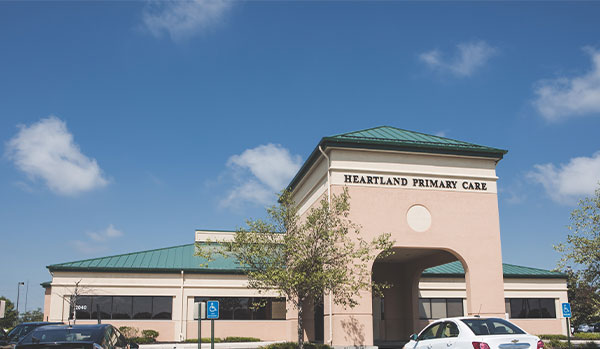What to Anticipate at a Leading Clinic Offering Urgent Care Services
What to Anticipate at a Leading Clinic Offering Urgent Care Services
Blog Article
Recognizing the Duty of Urgent Treatment in Giving Timely Therapy for Non-Life-Threatening Conditions
Urgent care facilities have actually emerged as an important element of the health care landscape, addressing the instant demands of individuals with non-life-threatening problems. Comprehending the nuances of immediate treatment could considerably affect individual outcomes and the overall effectiveness of healthcare delivery.
What Is Urgent Care?
Urgent treatment describes a category of clinical services made to deal with non-life-threatening problems that require instant interest. These centers work as an intermediary in between health care doctors and emergency areas, offering a practical alternative for individuals who need punctual care without the considerable waiting times normally connected with emergency departments.
Urgent treatment centers are commonly staffed by doctor, including doctors, registered nurse practitioners, and medical professional aides, that are educated to diagnose and deal with a wide array of problems. Common solutions supplied by these facilities consist of therapy for minor injuries, health problems, and infections, in addition to analysis tests such as X-rays and research laboratory job.
Additionally, urgent care facilities frequently accept walk-in individuals, removing the need for appointments. Overall, urgent treatment plays a crucial duty in the healthcare system, making sure clients can access essential clinical solutions promptly and successfully.

Lots of people might find themselves uncertain regarding when to seek treatment at an urgent care center rather than a key treatment medical professional or an emergency clinic. Immediate care is made to address non-life-threatening conditions that call for timely interest however are not serious enough to require an emergency space go to.
Typically, one should take into consideration urgent treatment for issues such as minor fractures, strains, cuts calling for stitches, or infections like urinary system tract infections. Additionally, cold or influenza symptoms, rashes, and allergies can likewise be suitably handled in this setting.
It is essential to note that urgent treatment is not ideal for deadly emergency situations, such as breast discomfort, difficulty breathing, or severe blood loss, which require prompt emergency clinic intervention.
People that do not have access to a medical care medical professional or can not safeguard a prompt consultation may also take advantage of urgent care solutions. Ultimately, recognizing when to use urgent care can bring about much more efficient health care delivery, permitting clients to obtain the ideal level of treatment based upon their certain health requirements.
Advantages of Urgent Treatment Centers
Choosing urgent treatment facilities for non-life-threatening conditions uses numerous advantages that improve person experience and access. One key benefit is the reduced delay times contrasted to typical emergency clinic. Immediate treatment centers normally run on a first-come, first-served basis, allowing patients to obtain timely clinical interest without the lengthy hold-ups often related to hospital setups.
Furthermore, urgent care facilities give extensive hours, including nights and weekends, accommodating people with varying timetables. This adaptability guarantees that people can look for care when it is most hassle-free for them, further advertising timely treatment.

Additionally, these centers frequently use a comprehensive variety of services, including small treatments and analysis examinations, all under one roof. This consolidation of services not just streamlines the individual experience but likewise cultivates a much more cohesive approach to handling non-life-threatening wellness problems, a knockout post inevitably benefiting overall individual end results.
Usual Problems Dealt With
At immediate care facilities, a variety of non-life-threatening problems can be efficiently dealt with, giving patients with obtainable and prompt clinical help. These centers are particularly adept at addressing problems that need prompt attention but do not posture an instant danger to life or arm or leg.
Common conditions dealt with at immediate treatment facilities consist of minor injuries such as strains, sprains, and fractures. Urgent care centers are equipped to execute required diagnostic tests, such as X-rays and laboratory examinations, allowing them to offer extensive treatment.
Furthermore, immediate treatment suppliers can carry out inoculations, helping to avoid the spread of transmittable conditions - Urgent Care. They likewise use services for minor treatments, such as suturing wounds or draining pipes abscesses. By supplying these varied services, immediate care centers play a crucial role in linking the gap in between health care and emergency services, guaranteeing patients obtain prompt treatment for a variety of conditions without the requirement for long wait times generally linked with emergency situation rooms
How Urgent Treatment Sustains Healthcare System
Immediate treatment centers play an essential duty in sustaining the total medical care system by alleviating the concern on emergency divisions and supplying prompt access to medical care for non-life-threatening conditions. By taking care of cases such as small injuries, infections, and health problems, immediate treatment facilities enable emergency departments to focus on even more important patients requiring instant attention.
Additionally, urgent treatment facilities enhance medical care accessibility, using extensive hours and a much more practical alternative to traditional key treatment settings. This availability is especially useful for clients who may not have a routine doctor or that require prompt treatment outside of common office hours. As an outcome, immediate care facilities effectively minimize wait times and enhance individual complete satisfaction.
Furthermore, urgent treatment centers contribute to cost savings for both clients and the healthcare system by offering lower-cost services compared to emergency divisions. This monetary performance is important in an age of climbing medical care costs, permitting clients to obtain required care without incurring outrageous expenditures.
Final Thought
In final thought, urgent care centers play a crucial role in the medical care system by supplying prompt treatment for non-life-threatening problems. By bridging the void in between key treatment and emergency situation spaces, these centers make certain that clients receive timely medical focus without the prolonged delay times normally related to emergency divisions. The access and sites performance of immediate treatment centers add significantly to alleviating the overall burden on healthcare sources, boosting patient outcomes, and promoting an extra effective healthcare shipment system.
Urgent care facilities have actually arised as an essential component of the health care more info here landscape, dealing with the instant demands of patients with non-life-threatening problems. Urgent treatment sees normally sustain reduced out-of-pocket expenditures contrasted to emergency division gos to, making care a lot more economical for clients without jeopardizing quality. Immediate care facilities are equipped to perform necessary diagnostic examinations, such as X-rays and laboratory tests, allowing them to provide comprehensive care.
By using these diverse solutions, urgent care facilities play a vital role in bridging the gap between primary care and emergency situation services, ensuring people get timely therapy for a vast array of conditions without the requirement for lengthy wait times normally connected with emergency situation spaces.
Additionally, urgent care facilities improve health care access, providing prolonged hours and an extra hassle-free option to conventional primary care setups.
Report this page